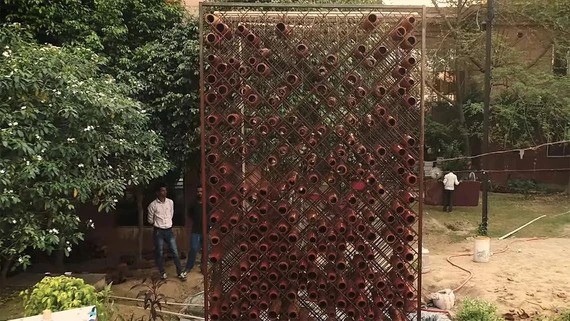
An Indian architect has come up with a new cooling technology that’s totally cool because it doesn’t rely on electricity or chemicals! This awesome solution blends traditional cooling techniques with modern design, offering a more cost-effective alternative to standard air conditioning systems.
The Honeycomb Wall
The key to this cooling method is a special honeycomb wall, created using earthenware pots soaked in water. As the water evaporates, it produces a cooling effect, significantly reducing the indoor temperature. This technique not only cools the house effectively but also helps reduce air pollution as a secondary benefit. During evaporation, a biofilm forms on the pots, which helps to purify the surrounding air. Since the design does not use plastic and emits no pollutants, it is a suitable replacement for traditional air conditioning systems.
Historical Context
Evaporative cooling methods have been employed by various civilizations throughout history. The Romans and Egyptians, for example, used wet materials to create cooler air. Egyptians would fan porous water-filled jars to generate cooler air, while Romans adopted a more direct approach by hanging thick, wet materials like cloth over doorways and tents.
Environmental and Economic Benefits
Applying this technique with a new design addresses the increasing challenges we face today. Modern cooling systems, although highly effective, rely on electricity and chemicals, which can contribute to overall air pollution in an area. The honeycomb wall cooling project not only offers environmental benefits but also aims to revive the declining pottery industry, which has seen a significant drop in recent years. Additionally, the project engages local artisans in production, creating jobs and promoting sustainability in various sectors.
This innovative approach to cooling homes without air conditioning showcases the potential for traditional methods to be adapted to modern needs. By understanding and utilizing these techniques, we can develop more sustainable and eco-friendly solutions for our everyday challenges.

